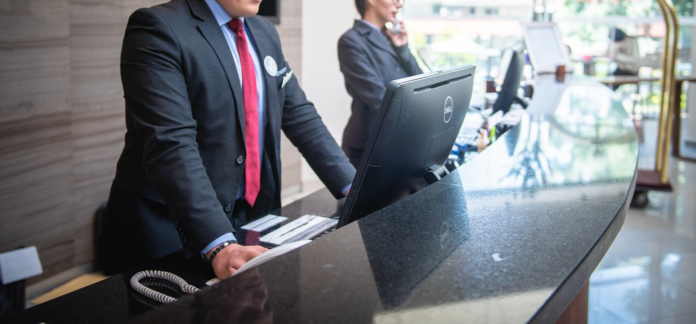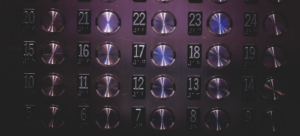Reception areas typically serve the same function in every business. They offer a warm welcome and act as information hotspots with all the answers. It’s a pretty straightforward concept, but we uncover additional potential once we throw digital signage into the mix. The variety of information really changes from business to business, and digital signage at reception areas can act as a powerful ally to make it more informative, efficient, and easier to handle for staff.
Welcome visitors
A common and simple way to utilize digital signage at a reception area is to welcome visitors or employees. Take it a step further and include a bit of information that most will find useful. Instruct visitors to a specific action, for instance. Direct them to a check-in area or tell them to ring a bell for service. You may also include general information such as noteworthy events in the city or the status of something unique to the establishment, perhaps the newest product launch or an event which is happening at the very moment.
Of course, look beyond hotels and tourism and see what you can provide for your customers. Hospitals can display the names of attending doctors. Corporate offices can show the floors of different departments or important announcements. Fitness centers can display today’s classes, and so on. This bit of information at the entrance makes a pleasant first impression for visitors.
Create information checkpoints
If your consumer base repeats a particular action, use reception areas as the central point for this purpose. For hotels, check-ins and check-outs are done at the front desk. If the process is straightforward, use digital signage to allow guests to do what they need to on their own. This is especially useful if the front desk is not managed 24/7.
Furthermore, allow visitors to access all the information they need over interactive displays. For instance, if the receptionist is temporarily occupied, a guest doesn’t need to wait and can immediately start filling out their guest form. Consider how this applies in other environments such as clinics, museums, government buildings, cultural centers, and so on. In summary, using digital signage at reception areas can tell the person if they need to wait for staff assistance or if they can get what they need on their own.
News!
The term news in this context truly depends on what information is most important to the corresponding audience. When it comes to companies which regularly have visitors from partners or employees who need to stay up-to-date with daily or weekly changes in the business, digital signage can display that information to have them ready at the start of the day. It will come across as professional and useful.
On the other hand, news can also mean general every-day updates from the local community, or even industry-specific news. Identify what visitors and employees are most interested in, and set it up on digital signage. RSS feeds make this process simple. You may even build your own news data feeds and connect it to your digital signage software.
Reminders and suggestions
This is another category which is highly dependent on the context. To simplify it, consider what could the average visitor to the reception desk need to be reminded of? Perhaps the latest project success story, upcoming deadlines, meetings, or conferences. Reception work hours, or those for other areas of the establishment, are another great example.
Also consider service availability, policy reminders, parking information, event suggestions, local attractions, safety information, transportation updates, and even emergency procedures.
Wayfinding and directory listings
In larger establishments such as hotels, corporate buildings, or hospitals, wayfinding digital signage is worth its weight in gold. Where possible and accessible, label the floors of different departments. For places outside your building establish common requests. If the target user is interested in attractions in the city, sights, or transportation hubs, feature them on an interactive map.
Where it applies, consider building a comprehensive directory of offices, departments, or employees to help visitors find their way.
Brand promotion and storytelling
Reception areas are typically found in lobbies and near waiting areas. Digital signage can be used for a variety of purposes here, such as brand awareness and product or service promotion. For more precise info on this topic, take a look at our article focusing on digital signage in lobbies.
Meanwhile, a bit of promotion can also be done via reception displays. It is important to keep it tasteful and comfortable on the eyes. A great bit of info to include here can focus on the brand, its history, plans, and goals for the year. In short, it focuses on the identity of the business and those who run it. This type of content can help build a stronger connection to the visitor. As usual, consider the audience in question, especially if it mainly consists of new visitors or returning ones. If the latter is the more common case, share recent progress or news about the business’s upcoming goals.
Digital signage software can further optimize the flow of content. Appointments and visits usually repeat at regular intervals throughout the day or week. Set up your software to display content based on the movements of the audience. For more info and suggestions on building schedules, check out this article!
Cover image by Rodrigo_SalomonHC.







